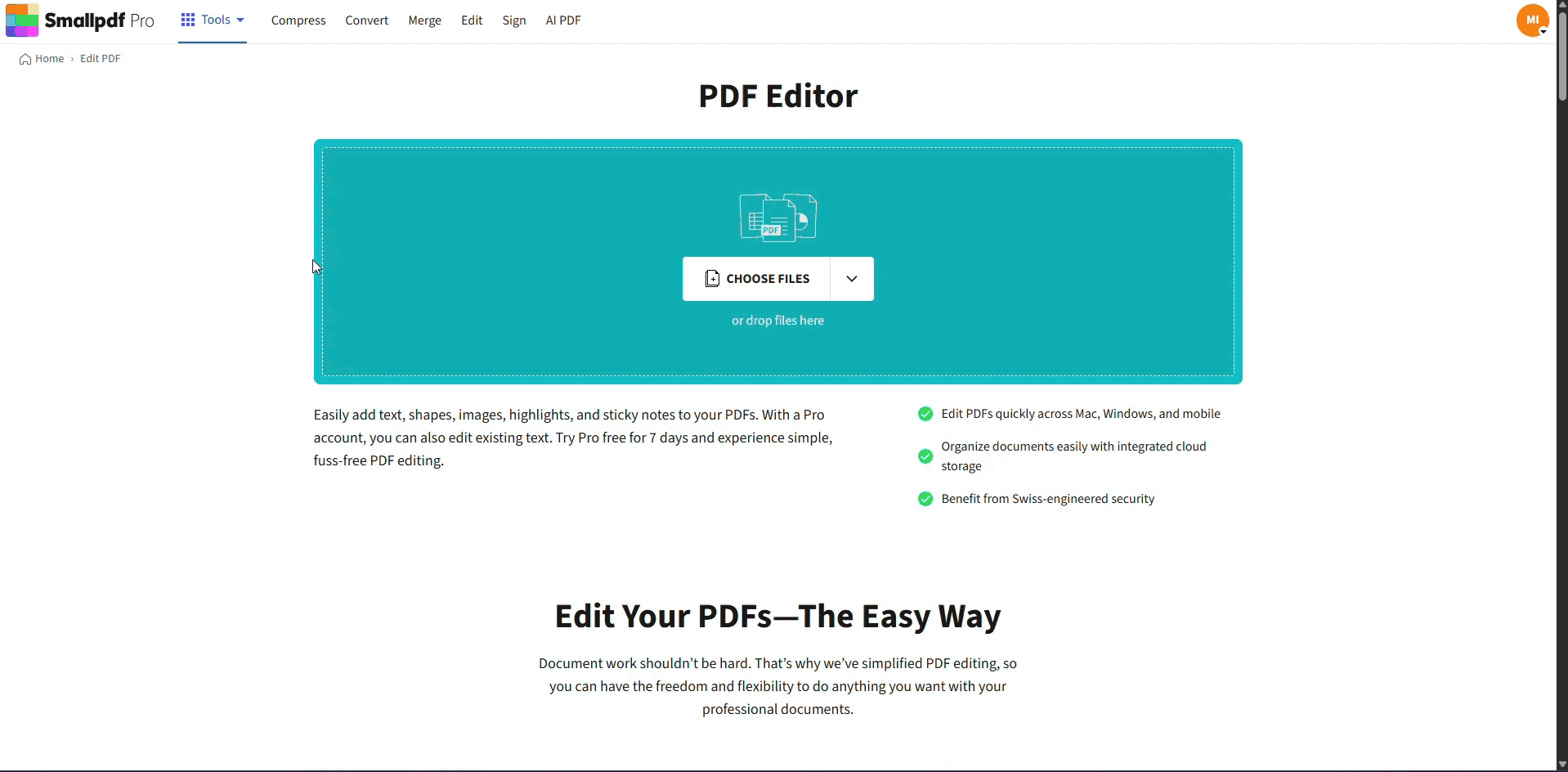The font you use in academic writing can impact how your work is read, reviewed, and remembered — so getting it right matters more than you think.
Whether you’re formatting an essay, a thesis, or a research abstract, your academic writing font and size affect clarity, structure, and first impressions.
In this guide, we’ll walk you through the best fonts for academic work, how to format them correctly, and how to make quick font fixes in your PDFs — so your document always looks submission-ready.
Choosing the Best Fonts for Academic Work
The ideal font for academic writing is both professional and easy to read. Here are the most widely accepted and recommended options for academic documents.
1. Times New Roman
- Style: Serif
- Why It Works: Timeless and widely considered the gold standard for academic writing. It’s also accepted by most formatting styles, including APA and MLA.
- Where to Use It: Essays, research papers, and formal reports.
2. Arial
- Style: Sans-serif
- Why It Works: Known for its clarity on digital screens. Its clean and simple look makes it a favorite for academic posters and presentations.
- Where to Use It: Academic posters, PowerPoint presentations, and online submissions.
3. Calibri
- Style: Sans-serif
- Why It Works: Modern and clean, Calibri is the default font for many word processors. APA format also recommends Calibri for academic papers.
- Where to Use It: Academic essays, research proposals, and digital files.
4. Cambria
- Style: Serif
- Why It Works: Designed for excellent readability both on-screen and in printed documents. Its classic, professional look fits academic standards.
- Where to Use It: Dissertation writing, theses, and research papers.
5. Georgia
- Style: Serif
- Why It Works: Combines a traditional serif style with better readability on both print and digital formats.
- Where to Use It: Research documents, academic journals, and case study write-ups.
What Fonts to Avoid
Stay away from informal or decorative fonts like Comic Sans or cursive fonts. These fail to exude professionalism and could harm the credibility of your work.
Formatting Guidelines for Academic Writing
Consistent formatting makes your work easier to read and appears polished. Use these tips for academic writing font and size standards.
1. Font Sizes
- Body Text: Typically 12-point font is standard for most academic papers. For digital academic posters or A1 presentations, 11-point font might be more appropriate.
- Headings: Use 14–16 pt fonts for section titles to create a visual hierarchy.
2. Line Spacing
Double-spacing is required for most academic documents, as it improves legibility and makes room for notes or edits from reviewers.
3. Margins
Keep it simple with standard 1-inch margins on all sides. This ensures your content stays balanced and readable.
4. Consistency Matters
Use the same font and size throughout your document. Mixing fonts can make your work look unprofessional and hard to follow.
Fix Formatting Issues Fast With Smallpdf
Once you export your paper to PDF, fixing formatting errors, like wrong fonts or uneven spacing, can be tricky without starting all over. With Smallpdf’s Edit PDF, you can correct last-minute issues directly in your file without the need to re-export. Here’s how you can do it in just a few clicks: 1. Upload Your File: Head to Edit PDF and drag in your document. 2. Fix Fonts: Change font style, size, or spacing on any text element. 3. Add Finishing Touches: Insert headers, footers, or even page numbers effortlessly. 4. Save & Share: Hit ‘Download’ once your paper is polished and ready to submit.

How to Edit Fonts in PDFs with Smallpdf
Why Fonts Matter in Academic Work
Using the correct academic essay font or presentation font size affects many aspects of your work:
- Better Readability makes it easier for reviewers to follow your arguments.
- Professional Appearance builds credibility and aligns with academic standards.
- Consistent Formatting shows attention to detail, which can make a difference in your grade or evaluation.
Frequently Asked Questions
Which font is best for academic writing?
Times New Roman is the most widely accepted font for academic papers, but Calibri and Cambria are also excellent choices based on your specific formatting requirements.
What is the preferred academic font?
Serif fonts like Times New Roman and Cambria are often preferred for their professional and traditional look.
What is considered an academic font?
Fonts that are professional, easy to read, and widely accepted by academic formats are considered academic fonts. Examples include Times New Roman, Arial, and Georgia.
What is the best font for academic figures?
For charts and diagrams, sans-serif fonts like Arial or Calibri are ideal due to their clarity and modern look.
What fonts are appropriate for academic work in Word?
Times New Roman (12-point), Calibri (11 or 12-point), and Cambria (12-point) are appropriate for academic papers created using Microsoft Word.
